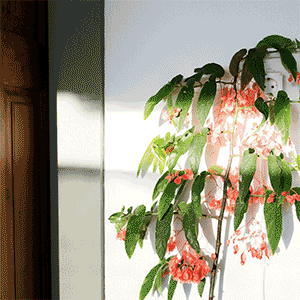Install the app
How to install the app on iOS
Follow along with the video below to see how to install our site as a web app on your home screen.
Notera: This feature may not be available in some browsers.
Du använder en lite för gammal webbläsare, du bör uppdatera den.
Se tillverkningsår 5dmkII och objektiv
- Trådstartare Patrik68
- Start datum
Kent Karlsson
Aktiv medlem
Objektivet ålder
Determining the Age of a Canon Lens
Canon has been transitioning to a 10-digit lens serial number (starting in 2008 with the Canon EF-S 18-200mm f/3.5-5.6 IS Lens) and ending the inclusion of a separate manufacturing date code. While date codes and the shorter serial number are still found on some lenses manufactured as late as 2012, this inclusion will likely end completely. We loved the date code because it made aging a lens easy. However, now we can age a lens based on the serial number alone.
For information on determining the age of a pre-10-digit serial number lens, see the section on interpreting the old date code below.
Determine the age of a Canon lens based on the 10-digit serial number
To age a Canon lens using the 10-digital serial number, we dissect the serial number as follows:
DD C SSSSSSS
The DD is the key to the date of manufacture of the lens - the date code. The Canon lens date code chart is shown below.
2008 2009 2010 2011 2012 2013
January 38 50 62 74 86 98
February 39 51 63 75 87 99
March 40 52 64 76 88 00
April 41 53 65 77 89 01
May 42 54 66 78 90 02
June 43 55 67 79 91 03
July 44 56 68 80 92 04
August 45 57 69 81 93 05
September 46 58 70 82 94 06
October 47 59 71 83 95 07
November 48 60 72 84 96 08
December 49 61 73 85 97 09
Future dates shown in the table are predictions/expectations. Of particular interest is how the numbering system will behave in March 2013 when the 99 is incremented. Will the DD value roll over to 00? Increment to 100 - becoming DDD?
The third digit in the serial number, C, may be a charge/batch type of number. Canon has been using this number to indicate lenses needing specific service-related updates such as firmware.
The remaining digits in the serial number, SSSSSSS, are the uniquely-identifying serial number of the lens.
Please take note that, while the overall chart is holding out nicely with the lenses we've checked, it is a work-in-process. In part, the numbers might be shifted by a month or so. Please send us any discrepancies you find.
Special thanks go out to friend-of-the-site Norbert for his role in the development of this chart.
To determine the age of a pre-10-digit serial number Canon lens bearing a date code
Until phasing out the practice starting in 2008, Canon included a date code beside the rear lens element of many (but not all) lenses (note that some 2012-manufactured lenses retain the date code). The date code (as seen below) is in the form of "UR0902". This code is also present on some other Canon products including camera bodies.
The first letter, "U", indicates that the lens was made in Canon's Utsunomiya, Japan factory. Prior to 1986, this letter is moved to the last position of the date code.
U = Utsunomiya, Japan
F = Fukushima, Japan
O = Oita, Japan
The second letter, "R", is a year code that indicates the year of manufacture. Canon increments this letter each year starting with A in 1986 and prior to that, A in 1960 without the leading factory code. Here is a table to make things simple:
A = 2012, 1986, 1960
B = 1987, 1961
C = 1988, 1962
D = 1989, 1963
E = 1990, 1964
F = 1991, 1965
G = 1992, 1966
H = 1993, 1967
I = 1994, 1968
J = 1995, 1969
K = 1996, 1970
L = 1997, 1971
M = 1998, 1972
N = 1999, 1973
O = 2000, 1974
P = 2001, 1975
Q = 2002, 1976
R = 2003, 1977
S = 2004, 1978
T = 2005, 1979
U = 2006, 1980
V = 2007, 1981
W = 2008, 1982
X = 2009, 1983
Y = 2010, 1984
Z = 2011, 1985
The first two numbers, "09", is the month number the lens was manufactured in. Month 02 is February, month 11 = November. The leading zero of the month code is sometimes omitted.
The next two numbers, "02", are meaningless in determining how old a Canon lens is. This is a Canon internal code (that is occasionally omitted).
You now know the manufacture date for your lens - But - You cannot know how long the lens was in inventory, in shipping transit and on a shelf until it was originally purchased (without having the original receipt or a reputable person accurately informing you).
The Canon lens date code in the sample picture indicates that this Canon EF 24-70mm f/2.8 L Lens (I know the lens model because I took the picture - not from the date code) was made in Utsunomiya, Japan in September 2003.
Köpte en ny 5D MkII med 24-105 glugg.
Undrar om man kan se när den är tillverkad?
Huset har lägre serienummer än mitt tre år gamla hus men batteriet är tillverkat 2012/08
Gluggen hade högre serienummer?
Determining the Age of a Canon Lens
Canon has been transitioning to a 10-digit lens serial number (starting in 2008 with the Canon EF-S 18-200mm f/3.5-5.6 IS Lens) and ending the inclusion of a separate manufacturing date code. While date codes and the shorter serial number are still found on some lenses manufactured as late as 2012, this inclusion will likely end completely. We loved the date code because it made aging a lens easy. However, now we can age a lens based on the serial number alone.
For information on determining the age of a pre-10-digit serial number lens, see the section on interpreting the old date code below.
Determine the age of a Canon lens based on the 10-digit serial number
To age a Canon lens using the 10-digital serial number, we dissect the serial number as follows:
DD C SSSSSSS
The DD is the key to the date of manufacture of the lens - the date code. The Canon lens date code chart is shown below.
2008 2009 2010 2011 2012 2013
January 38 50 62 74 86 98
February 39 51 63 75 87 99
March 40 52 64 76 88 00
April 41 53 65 77 89 01
May 42 54 66 78 90 02
June 43 55 67 79 91 03
July 44 56 68 80 92 04
August 45 57 69 81 93 05
September 46 58 70 82 94 06
October 47 59 71 83 95 07
November 48 60 72 84 96 08
December 49 61 73 85 97 09
Future dates shown in the table are predictions/expectations. Of particular interest is how the numbering system will behave in March 2013 when the 99 is incremented. Will the DD value roll over to 00? Increment to 100 - becoming DDD?
The third digit in the serial number, C, may be a charge/batch type of number. Canon has been using this number to indicate lenses needing specific service-related updates such as firmware.
The remaining digits in the serial number, SSSSSSS, are the uniquely-identifying serial number of the lens.
Please take note that, while the overall chart is holding out nicely with the lenses we've checked, it is a work-in-process. In part, the numbers might be shifted by a month or so. Please send us any discrepancies you find.
Special thanks go out to friend-of-the-site Norbert for his role in the development of this chart.
To determine the age of a pre-10-digit serial number Canon lens bearing a date code
Until phasing out the practice starting in 2008, Canon included a date code beside the rear lens element of many (but not all) lenses (note that some 2012-manufactured lenses retain the date code). The date code (as seen below) is in the form of "UR0902". This code is also present on some other Canon products including camera bodies.
The first letter, "U", indicates that the lens was made in Canon's Utsunomiya, Japan factory. Prior to 1986, this letter is moved to the last position of the date code.
U = Utsunomiya, Japan
F = Fukushima, Japan
O = Oita, Japan
The second letter, "R", is a year code that indicates the year of manufacture. Canon increments this letter each year starting with A in 1986 and prior to that, A in 1960 without the leading factory code. Here is a table to make things simple:
A = 2012, 1986, 1960
B = 1987, 1961
C = 1988, 1962
D = 1989, 1963
E = 1990, 1964
F = 1991, 1965
G = 1992, 1966
H = 1993, 1967
I = 1994, 1968
J = 1995, 1969
K = 1996, 1970
L = 1997, 1971
M = 1998, 1972
N = 1999, 1973
O = 2000, 1974
P = 2001, 1975
Q = 2002, 1976
R = 2003, 1977
S = 2004, 1978
T = 2005, 1979
U = 2006, 1980
V = 2007, 1981
W = 2008, 1982
X = 2009, 1983
Y = 2010, 1984
Z = 2011, 1985
The first two numbers, "09", is the month number the lens was manufactured in. Month 02 is February, month 11 = November. The leading zero of the month code is sometimes omitted.
The next two numbers, "02", are meaningless in determining how old a Canon lens is. This is a Canon internal code (that is occasionally omitted).
You now know the manufacture date for your lens - But - You cannot know how long the lens was in inventory, in shipping transit and on a shelf until it was originally purchased (without having the original receipt or a reputable person accurately informing you).
The Canon lens date code in the sample picture indicates that this Canon EF 24-70mm f/2.8 L Lens (I know the lens model because I took the picture - not from the date code) was made in Utsunomiya, Japan in September 2003.
Håkan Bråkan
Aktiv medlem
Men kamerahuset? Gamla 5d kände ma igrn tillverkningsåret på första siffran i serienumret, men nuförtiden?
PMD
Aktiv medlem
Hur många siffror är det i serienumret på objektivet? Om det är färre siffror än 10 så finns det en separat datumkod (med bokstäver och siffror) nånstans runt bajonettfattningen. Det 10-siffriga serienumret kan dechiffreras enligt inlägg #2 Serienumret innehåller inga bokstäver, vare sig det är 10-siffrigt eller kortare.
Similar threads
- Svar
- 23
- Visningar
- 3 K
- Svar
- 45
- Visningar
- 5 K
- Svar
- 22
- Visningar
- 4 K









